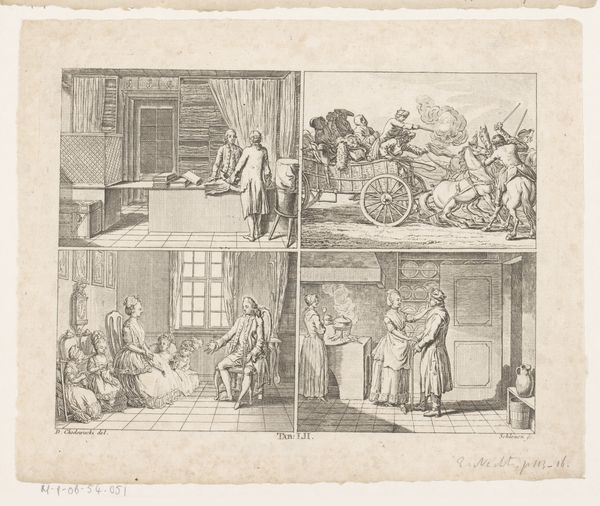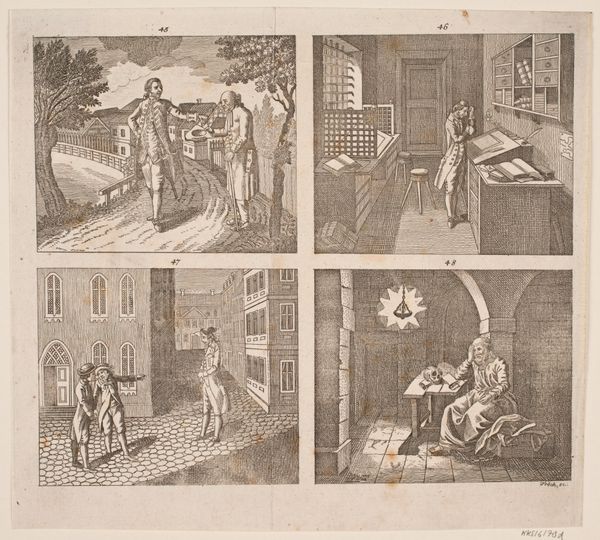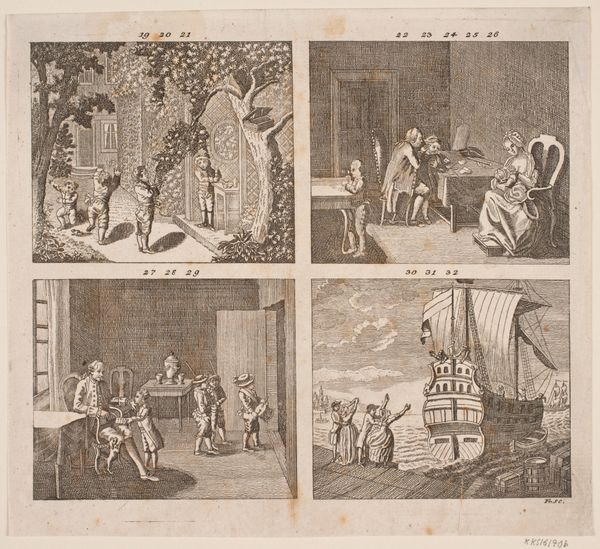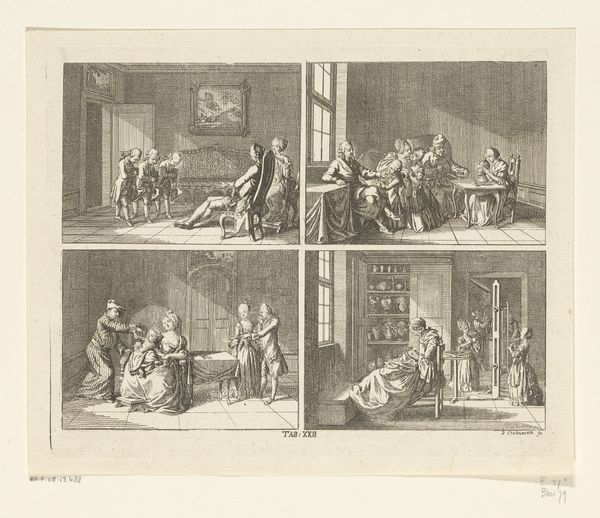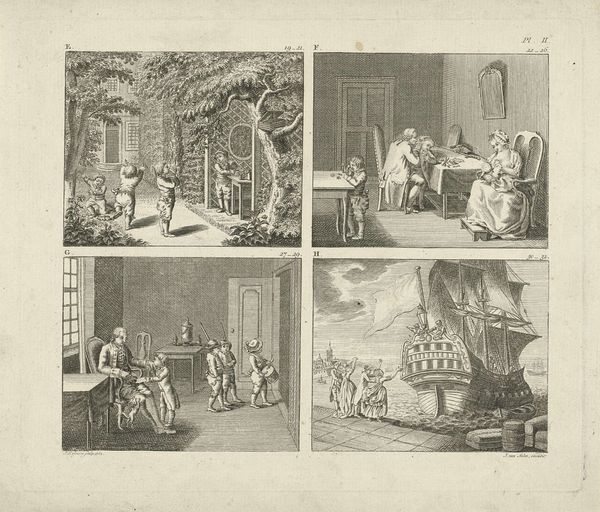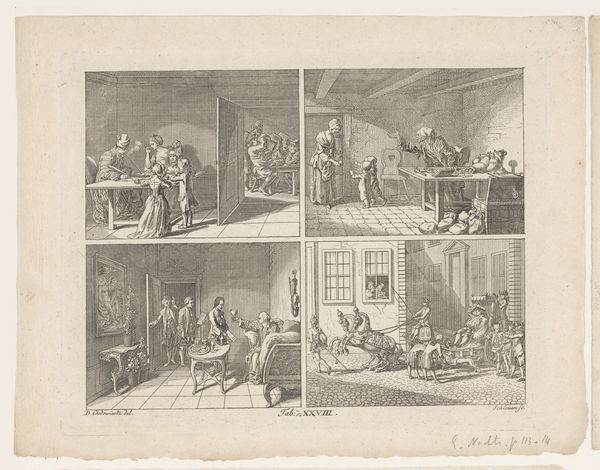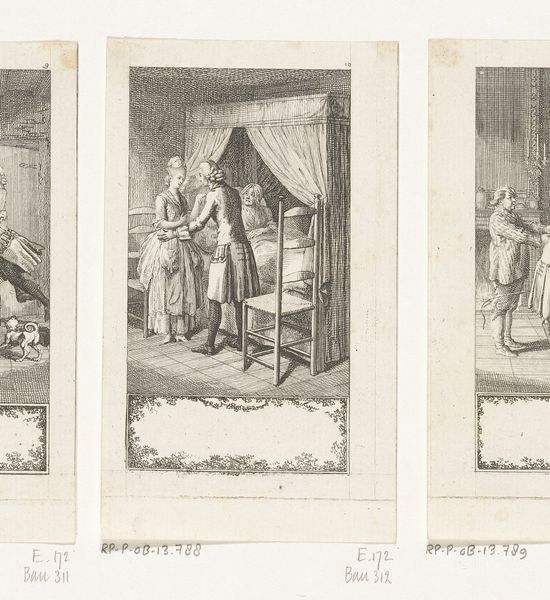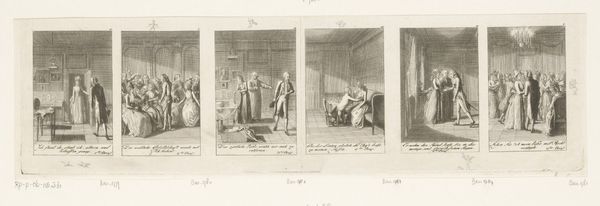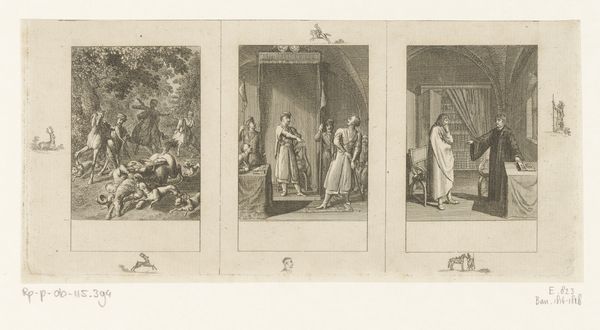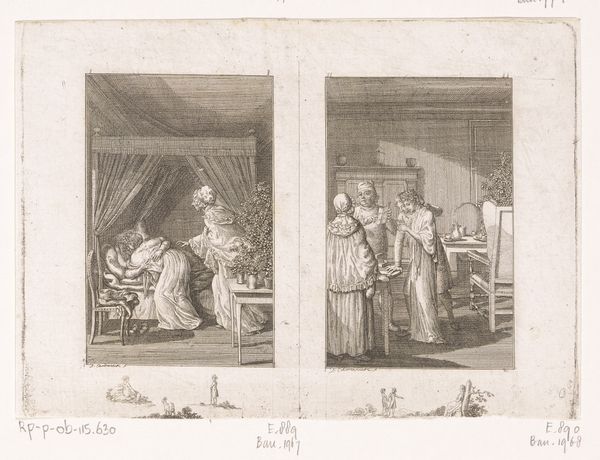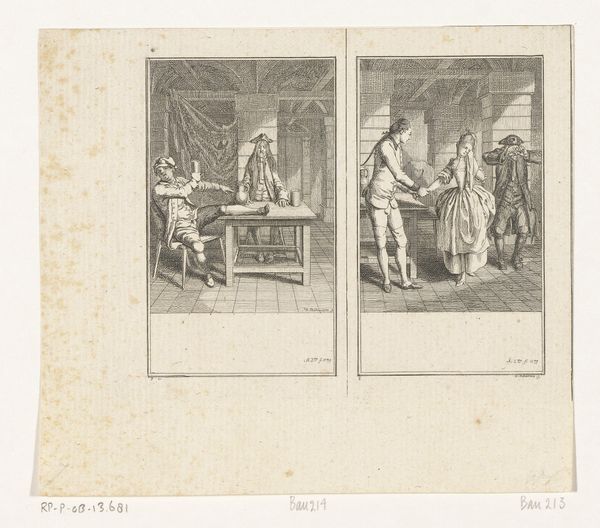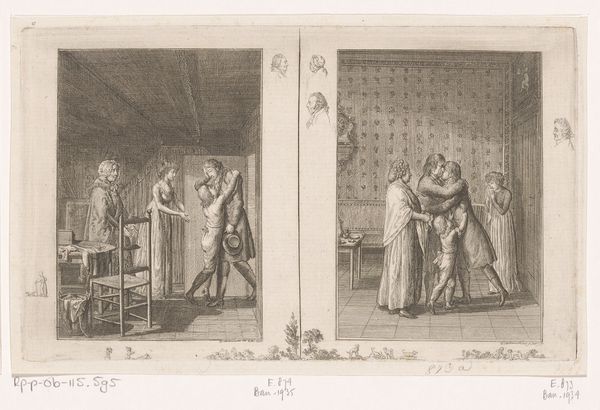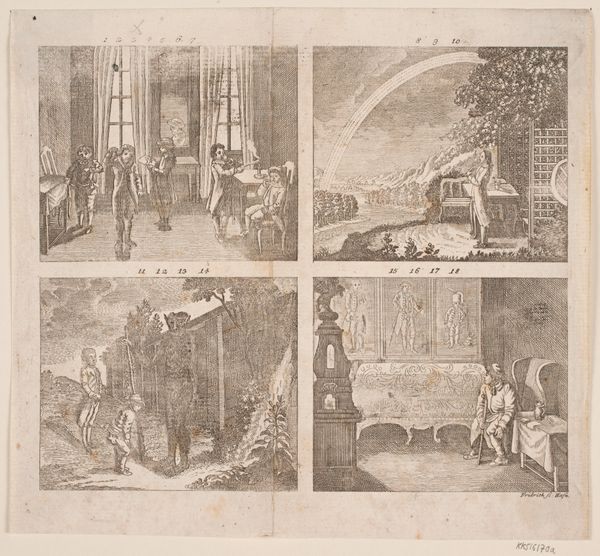
print, engraving
#
narrative-art
# print
#
genre-painting
#
history-painting
#
engraving
Dimensions: 172 mm (height) x 185 mm (width) (bladmaal)
Curator: Immediately, my eye is drawn to the overall linear quality of the work. The hatching and cross-hatching are exquisitely controlled, rendering distinct tonal ranges across these four distinct vignettes. Editor: Indeed. We’re looking at "Fremstillinger for børn," or "Representations for Children," an engraving dating to 1790 by Johann Gottlieb Friedrich, part of the collection at the SMK, the National Gallery of Denmark. Each panel offers a domestic snapshot, doesn't it? I'm struck by how readily they recall archetypal scenes – the sickbed, the hidden treasure...it stirs something ancient in the memory. Curator: Notice the interplay of light and shadow in each tableau. Observe particularly panel 44, at the lower left, where the engraver expertly suggests spatial depth within the arched cellar, using the limited tools afforded by this medium. It almost recalls Piranesi. Editor: Ah, yes, and speaking of 'archetypal,' that scene is almost alchemical, isn't it? A hooded figure uncovering, or perhaps burying, something. And look at the subtle gestures throughout – a hand extended in comfort by the bedside, figures huddled conspiratorially by a doorway... Curator: Precisely! The architecture, however, is paramount. The linear perspective creates discrete, knowable worlds, framed for our consideration. Note how the architectural framing within each square isolates its mini-narrative. Editor: It's true; each frame invites individual contemplation, yet the cumulative effect resonates beyond its constituent parts. Perhaps its concern isn't for an individual frame, but the experience of reading images serially to reflect childhood developmental phases. What do you see reflected of your own youth in it? Curator: My gaze remains tethered to Friedrich's masterly control of line. To distill human dramas, entire narratives, using such stark simplicity is an astonishing accomplishment. Editor: Absolutely, but its lasting appeal relies not only on Friedrich's expert technique, but how well these familiar visual emblems function to evoke timeless truths around formative experiences. It reminds us that visual culture speaks directly to both our inner and outer landscapes, just as it did over two centuries ago.
Comments
No comments
Be the first to comment and join the conversation on the ultimate creative platform.
